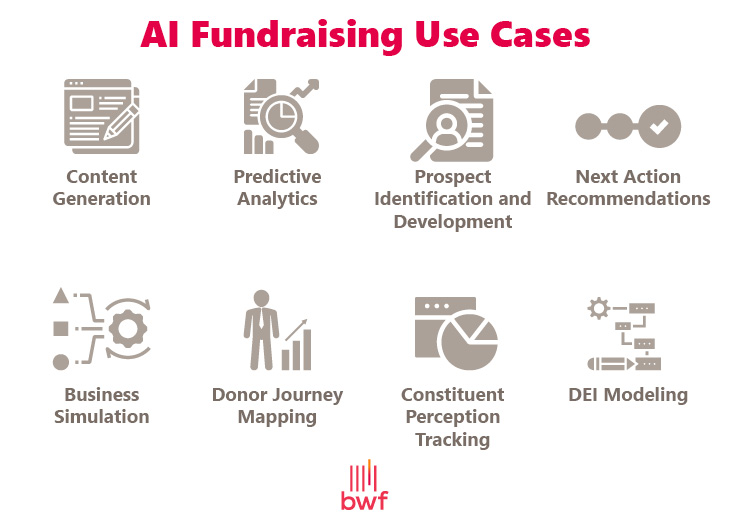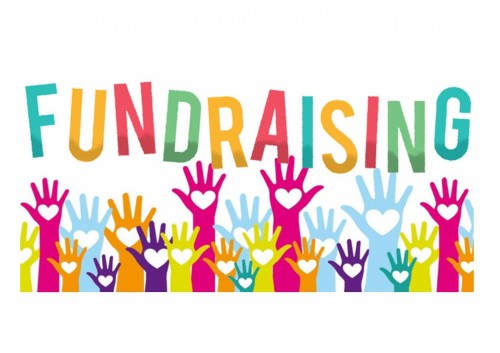Imaginative Nonprofit Fundraising Ideas: Increase Donations and Involvement
Imaginative Nonprofit Fundraising Ideas: Increase Donations and Involvement
Blog Article
The Duty of Community Involvement in Nonprofit Fundraising: Structure Lasting Relationships for Lasting Assistance
Community interaction is significantly recognized as a crucial part of successful nonprofit fundraising. By promoting authentic partnerships with local stakeholders, organizations can grow trust and loyalty, which are crucial for lasting support. Nevertheless, the methods and techniques used to engage communities vary commonly, raising crucial questions about performance and impact. What are the most effective practices for cultivating these crucial connections, and just how can nonprofits determine their success in this sector? Recognizing these dynamics could significantly influence the future of fundraising initiatives and the general mission of not-for-profit organizations.
Understanding Area Involvement
Community involvement is an important element of effective not-for-profit fundraising efforts. Nonprofits should recognize key stakeholders-- such as community members, regional companies, and other organizations-- to develop reliable engagement techniques.
Effective neighborhood engagement is based on energetic listening and responsiveness to the demands and interests of the area. This procedure includes obtaining comments, comprehending community characteristics, and making certain that the organization's goal lines up with local concerns. Engaging the area can take different forms, including public conferences, volunteer opportunities, and partnership initiatives, each designed to urge involvement and investment in the company's goals.
Moreover, community involvement ought to be come close to as an ongoing discussion rather than a single effort. By fostering an inclusive setting where area voices are heard and valued, nonprofits can build a solid foundation for future fundraising undertakings. Inevitably, a deep understanding of neighborhood engagement empowers organizations to create genuine connections that improve their overall performance and sustainability.
Benefits of Solid Relationships
Solid connections developed via community engagement yield countless advantages for not-for-profit fundraising efforts. Primarily, these partnerships foster count on and credibility, crucial elements in encouraging donors to contribute. When potential supporters see a not-for-profit actively included in their community, they are most likely to think in its mission and impact.

Additionally, these relationships help with reliable interaction. Nonprofits can leverage their links to share stories of influence, updates, and requires, ensuring that advocates remain enlightened and engaged. This open line of interaction not only strengthens bonds however likewise motivates word-of-mouth promo, broadening the not-for-profit's reach.
Finally, solid area connections can attract brand-new partners and enrollers. Individuals and organizations are more inclined to straighten with companies that show meaningful neighborhood involvement, supplying extra resources and assistance that can dramatically improve fundraising capacities. Thus, growing durable partnerships through neighborhood interaction is essential to a nonprofit's lasting fundraising success.
Techniques for Efficient Engagement
Just how can nonprofits successfully involve their neighborhoods to boost fundraising efforts? Routine updates, involving web content, and calls-to-action can galvanize neighborhood rate of interest and participation.
2nd, holding neighborhood events, such as workshops, volunteer possibilities, or fundraising drives, assists in face-to-face communication, enabling nonprofits to showcase their effect and efforts. These events not only raise funds however likewise grow partnerships and enable neighborhood participants to engage directly with the cause.
Third, executing individualized communication approaches can boost engagement. Customizing messages to specific benefactor segments based upon rate of interests and previous payments promotes a sense of belonging and financial investment in the company's mission.
Lastly, developing collaborations with neighborhood businesses and neighborhood leaders can amplify outreach initiatives. Collective initiatives can improve exposure and reliability, showing a collective dedication to the community's wellness. By integrating these strategies, nonprofits can build lasting relationships that improve fundraising initiatives and drive sustainable assistance.
Measuring Engagement Success
While involving the neighborhood is important for successful not-for-profit fundraising, determining the efficiency of these engagement efforts is just as essential. Establishing clear metrics allows companies to analyze just how well they are attaching with their audience and attaining their fundraising goals. Key efficiency signs (KPIs) such as contributor retention rates, volunteer engagement levels, and involvement on social media platforms offer concrete data for discover this analysis.
/tastea-2019/images/fundraiseelements1-03-cb88c.png)
Frequently analyzing these metrics enables companies to pivot their techniques when necessary, ensuring that neighborhood involvement continues to be aligned with their total objective. In addition, sharing these results with stakeholders promotes openness and develops trust fund, motivating more area involvement. Inevitably, a robust dimension structure not just notifies future fundraising campaigns yet additionally enhances the connection between the not-for-profit and its fans, preparing for sustainable success.
Situation Researches in Community Effect
Countless case studies highlight the extensive influence that area involvement can have on not-for-profit fundraising success. One noteworthy example is the "Something to chew on" campaign, where a neighborhood food financial institution partnered with institutions and businesses to host area dinners. These events not only increased funds yet likewise promoted a feeling of belonging amongst individuals, substantially enhancing contributor retention prices.
One more compelling instance is the "Green Spaces Project," which involved neighborhood homeowners in the revitalization of urban parks. This effort not only garnered financial backing from neighborhood organizations yet likewise cultivated a volunteer base that added to ongoing maintenance and programming. The feeling of possession and pride among area participants converted into continual payments.
In the world of arts, the "Art for All" campaign effectively involved regional artists and customers to produce collaborative art installments, bring about increased visibility and donations for a local arts not-for-profit.
These instances highlight that when nonprofits prioritize area involvement, they can produce long lasting relationships that enhance fundraising efforts, making certain lasting assistance and promoting a dynamic community culture. Such situations demonstrate that area involvement is not simply a method yet an important pillar of not-for-profit success.
Final Thought
Finally, neighborhood interaction is essential to the success of not-for-profit fundraising efforts. By fostering strong relationships with neighborhood stakeholders, organizations enhance depend on and reliability, resulting in boosted contributor retention and loyalty. Carrying out effective engagement techniques and measuring their impact makes certain that this page nonprofits can adapt and thrive. Eventually, a robust foundation of community support not just enhances fundraising potential yet likewise grows a culture of cooperation, crucial for accomplishing lasting business objectives and sustaining purposeful influence.
Nonprofits have to recognize essential stakeholders-- such as community participants, local businesses, and other organizations-- to produce effective interaction techniques.

In final get more thought, community interaction is indispensable to the success of nonprofit fundraising initiatives.
Report this page